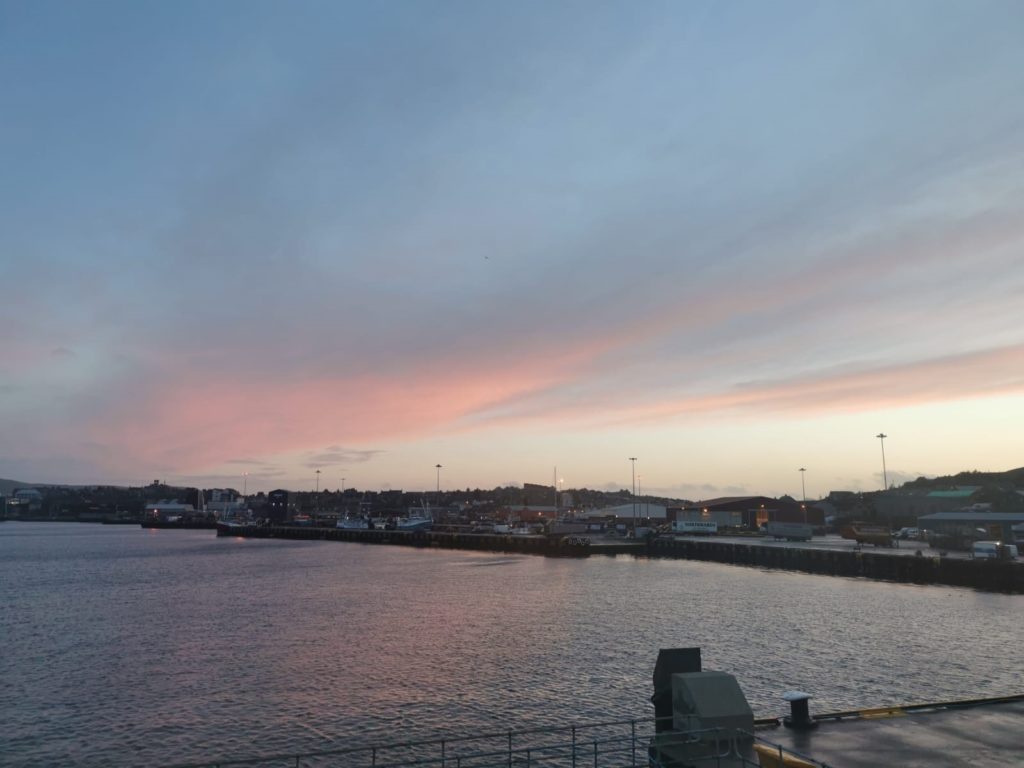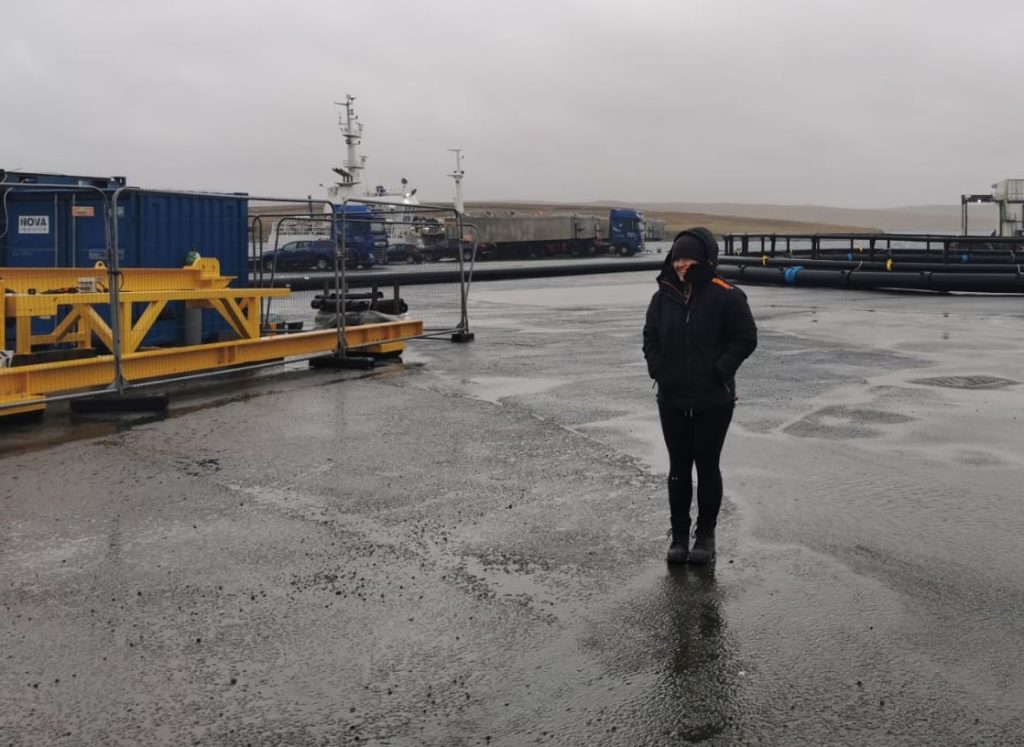Published:
4 January 2021
Written by:
Offshore Renewable Energy (ORE) Catapult
Tags: Work package 10
By Heather McLarty, Project Manager at the Offshore Renewable Energy (ORE) Catapult
Advancing innovative and renewable solutions in Scotland has always been something that interests me and so when I had the opportunity to work on the EnFAIT project, I jumped at it. There are still so many unknowns about tidal energy, compared to other renewable energy sources such as wind, so it’s exciting to be involved in such a ground-breaking project that is set to pave the way for future tidal energy innovations. Shetland is the perfect location for the EnFAIT project as the waters have the ideal conditions, such as depth and speeds, to capture the energy of the tide. As ORE Catapult’s project manager for the EnFAIT project, I was keen to see the project in action for myself and get stuck in.
A 24-hour Snapshot
5.30pm – After the drive up from Glasgow to Aberdeen, I boarded the one hour ferry to Shetland. Given the current COVID-19 circumstances, the ferry was quiet and mainly occupied by passengers going to Shetland for work purposes. I spent half an hour catching up on emails before meeting my colleague to confirm details of the work we’ll be doing on site over the next week. It was a breath of fresh air to catch up face-to-face, something different from our weekly virtual meetings.

7.30am – We arrived in Shetland the following morning. After a good(ish) night’s sleep on the ship, it was time to disembark and head to site – it became very clear, very quickly why warm clothes were essential mid-November in Shetland. The sun was a bit later rising as we were so far north, but it was bright enough to see the small town of Lerwick.
9am – We arrived at site and got our PPE on before getting stuck in. We got started with preparations to calibrate the strain gauges, which will measure the force of the water as it passes through the tidal turbine blades in the tidal array. I helped with assembling the frame for this – it was nice to see months of planning and desk work materialise on site.

2pm – We put the tools down for a quick lunch break, at which point the strain gauges were ready to be calibrated. A successful morning’s work done!
5pm – As the sun began to set, we finished up for the day to review the calibration data. The strain gauges installed on the tidal turbine blades will give us an idea of how the blades respond to these forces throughout the operation of the turbine through different tides; this calibration data is essential so that we know how the turbines are performing when they are deployed on site in Cullivoe.
Q&A: Strain gauges
Back to basics – what are strain gauges?
A strain gauge is a sensor that allows the user to monitor changes in the shape of an object. When a force is applied to an object, in this case a tidal turbine blade, it bends or changes shape slightly. Strain gauges, which are bonded to the object, bend with the object and monitor how much it is bending, which allows the strain that the object is under to be determined. This in turn allows a better understanding of the forces being applied to the object.
How were they used in tidal energy?
For the EnFAIT project, the tidal turbine blades are subject to varying forces such as the seawater flows over them. These forces change as the tide speeds up, slows down and changes direction. The strain gauges installed on the tidal turbine blades will give us an idea of how the blades respond to these forces throughout the operation of the turbine through different tides. They will also allow us to look at differences in the forces that the turbines experience when they are moved into different configurations. Understanding the effects of organising the turbine array in different configurations will allow a better understanding to be developed of how to optimise the configuration of the entire array, ultimately reducing the cost of tidal energy.
Strain gauges are used in many applications across different sectors; from measuring torque in engine shafts to tension in suspension bridge cables. The wind industry uses them to monitor the strain on wind turbine blades during operation. We are using them in a very similar way on the EnFAIT project, however, there are a few additional challenges to overcome with using them subsea, including providing power to the strain gauging system and protecting the system from water ingress.
If these strain gauge calibration tests are successful, what’s next for the project?
The calibration process that took place for the strain gauges has allowed us to quantify what the signals sent by the strain gauges to the storage device mean in terms of blade loading. With this understanding of how the strain gauge signals relate to blade bending, we will be able to look at the signals recorded from the strain gauges during the turbine operation and understand more of how the forces acting on the blades vary throughout the operation of the turbines. Ultimately, this will allow us to develop a better understanding of how to arrange the tidal turbine array in a more optimal layout.
As someone who has been working from home for the past nine months, it was great to be able to get out of my home office and go to site. Visiting Shetland, home of the EnFAIT project, was definitely something different and the perfect way to get immersed in the project.

